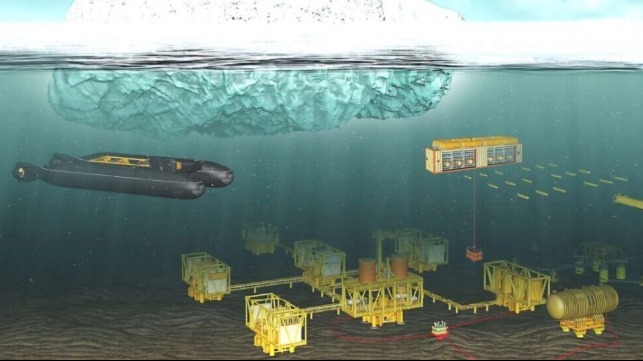Russia's USC Wants to Explore for Oil Under Arctic Ice Using Robots

As Russia intensifies the development of its vast petroleum resources in the Arctic, the state-owned United Shipbuilding Corporation (USC) has revealed a proposed design for an advanced underwater robot system that is intended to operate under the ice. The design is part of USC’s Project Iceberg, which is intended to allow year-round development of offshore oil and gas in the Arctic.
The underwater robot system consists of deep-sea geological drilling rigs, capable of drilling wells and obtaining core sample at sea depths of up to 4,500 meters. A prototype of this rig has already been manufactured and tested. In addition, the robotic complex includes a group of autonomous underwater vehicles (AUVs) capable of carrying out seismic exploration in hard-to-reach areas of the Arctic shelf, regardless of the season.
The new details were revealed this week by two senior USC executives at a shipbuilding conference in St. Petersburg – the Advisor to the General Director of USC, Vasily Boytsov, and the General Designer of Marine Structures, Evgeny Toropov.The robotic submarines were initially designed in 2017 by the Russian Foundation for Advanced Research Projects (FAR). At the time, the designers estimated that the complete system would take 10 years to build. However, delays in financing are likely to affect the timelines, and the update from USC indicates the project is in the implementation phase.
The Arctic is the powerhouse of the Russian energy industry, contributing an estimated 80 percent of Russia’s natural gas production and 20 percent of its crude production, according to the International Energy Agency. Now that it lacks access to Western oil and gas expertise due to sanctions, Russia is looking for new ways to move projects forward without external assistance.
No comments:
Post a Comment